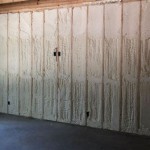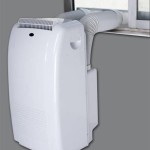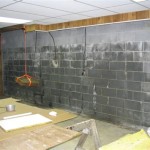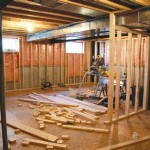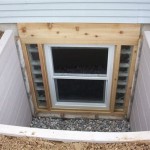What To Do With Water In Basement
Discovering water in a basement is a homeowner's unwelcome surprise. It is crucial to address the problem swiftly and effectively to prevent structural damage, mold growth, and health hazards. Identifying the source of the water intrusion is the initial step, followed by implementing appropriate solutions. This article outlines the necessary actions to mitigate water damage in a basement and prevent future occurrences.
Identifying the Source of Water Intrusion
The first step in resolving a water problem in a basement is to pinpoint the source. Common causes include: rainwater runoff, groundwater seepage, plumbing leaks, and condensation. Carefully inspecting the basement walls, floors, and ceilings for signs of water entry is essential. Look for cracks, damp spots, or water stains. Check areas around windows, door frames, and pipes. During or immediately after rainfall, observe the exterior of the house for potential sources of water entry, such as improperly sloped landscaping that directs water towards the foundation or clogged gutters that overflow and saturate the soil around the house. Understanding the source helps in selecting the most effective remediation strategy.
One frequent culprit is rainwater runoff. When rainwater is not properly diverted away from the foundation, it saturates the soil and can seep into the basement through cracks or porous materials. Another common source is groundwater. The water table fluctuates, and during periods of heavy rain or snowmelt, the groundwater level can rise above the basement floor, leading to hydrostatic pressure that forces water through the foundation. Plumbing leaks from water pipes, sewer lines, or appliances such as washing machines and water heaters can also contribute to basement flooding. Condensation, especially in unfinished basements, can occur when warm, humid air comes into contact with cool surfaces. This is particularly prevalent during the summer months.
A systematic approach to source identification is crucial. Start by checking the gutters and downspouts to ensure they are clean and functioning correctly. Make sure downspouts are directing water away from the foundation. Inspect the landscaping around the house to ensure it slopes away from the foundation. Look for any cracks or gaps in the foundation walls or floors. Check for leaky pipes or appliances. If condensation is suspected, monitor the humidity levels in the basement. Using a dehumidifier can help reduce humidity and prevent condensation. If the source is not readily apparent, consider consulting with a professional to conduct a thorough inspection.
Immediate Actions to Mitigate Water Damage
Once water is discovered in the basement, taking prompt action is essential to minimize damage. The first priority is to ensure safety. If there is standing water and electrical outlets or appliances are present, avoid contact with the water to prevent electrocution. Turn off the electricity to the affected area at the breaker box. Document the extent of the water damage with photographs or videos for insurance purposes. Remove any valuable items from the affected area to prevent further damage. This includes furniture, electronics, and personal belongings. If possible, elevate items on pallets or blocks to keep them off the wet floor.
After ensuring safety and documenting the damage, begin removing the water. Small amounts of water can be mopped up or absorbed with towels. For larger amounts of water, use a wet/dry vacuum, also known as a shop vac, or a sump pump. A sump pump is particularly useful for removing large volumes of water quickly. If the water is contaminated with sewage, exercise caution and wear protective gear, such as gloves, masks, and waterproof boots. Contaminated water poses a health risk and requires specialized cleaning and disinfection. Once the water is removed, begin the drying process. Open windows and doors to increase ventilation. Use fans to circulate air and speed up the drying process. Dehumidifiers can help remove moisture from the air and prevent mold growth.
If the water damage is extensive or if mold growth is already present, consider hiring a professional water damage restoration company. These companies have specialized equipment and expertise to remove water, dry out affected areas, and prevent mold growth. They can also provide structural repairs and restoration services. It is crucial to address water damage quickly to prevent further deterioration of the building materials and to minimize the risk of mold growth. Mold can grow within 24 to 48 hours in a damp environment and can cause health problems, such as allergies, asthma, and respiratory infections.
Preventive Measures to Avoid Future Water Intrusion
Preventing water intrusion is better than dealing with the aftermath. Several measures can be taken to keep the basement dry and avoid future water problems. These include: improving drainage, sealing cracks and foundation walls, installing a sump pump, and maintaining proper ventilation. Regularly inspecting the foundation and addressing any issues promptly can help prevent more significant problems in the future.
Improving drainage is a crucial step in preventing water from entering the basement. Ensure that the landscaping around the house slopes away from the foundation. This will help direct rainwater away from the house. Clean gutters and downspouts regularly to prevent clogs and overflows. Consider extending downspouts to discharge water further away from the foundation. Installing French drains can also help divert groundwater away from the foundation. A French drain is a trench filled with gravel that contains a perforated pipe. The pipe collects groundwater and directs it away from the house.
Sealing cracks and foundation walls can prevent water from seeping into the basement. Use a concrete crack sealant to fill any cracks in the foundation walls or floors. Apply a waterproof coating to the exterior of the foundation walls to prevent water from penetrating the concrete. Installing a sump pump is an effective way to remove water that does enter the basement. A sump pump is a submersible pump that sits in a pit in the basement floor. When water enters the pit, the pump automatically turns on and pumps the water out of the basement. Regular maintenance of the sump pump is essential to ensure it is functioning properly. Maintaining proper ventilation in the basement can help reduce humidity and prevent condensation. Open windows and doors when possible to allow air to circulate. Use a dehumidifier to remove moisture from the air. Insulate cold surfaces, such as pipes, to prevent condensation from forming.
By identifying the source of water intrusion, taking immediate action to mitigate water damage, and implementing preventive measures, homeowners can effectively address water problems in their basements and protect their property from further damage. Regular maintenance and inspections are essential to ensure the long-term integrity of the foundation and prevent future water intrusion.
.webp?strip=all)
Water In The Basement 5 Common Causes How To Fix Them

Water In Your Basement Follow These Essential Steps Dry

Water In The Basement What To Do Causes Prevention

Water In The Basement What To Do Causes Prevention

Water In Your Basement What Caused It To Do And How Stop The Sump Pump Co

Here S How Much Damage Water Can Do To A Basement

8 Steps To Defeat Water In Basement Woes What Do

What To Do About Basement Water How Prevent It

Water In Basement What To Do And How Prevent It From Happening Again

What To Do When A Home Inspection Reveals Wet Basement News And Events For Systems Inc
Related Posts
